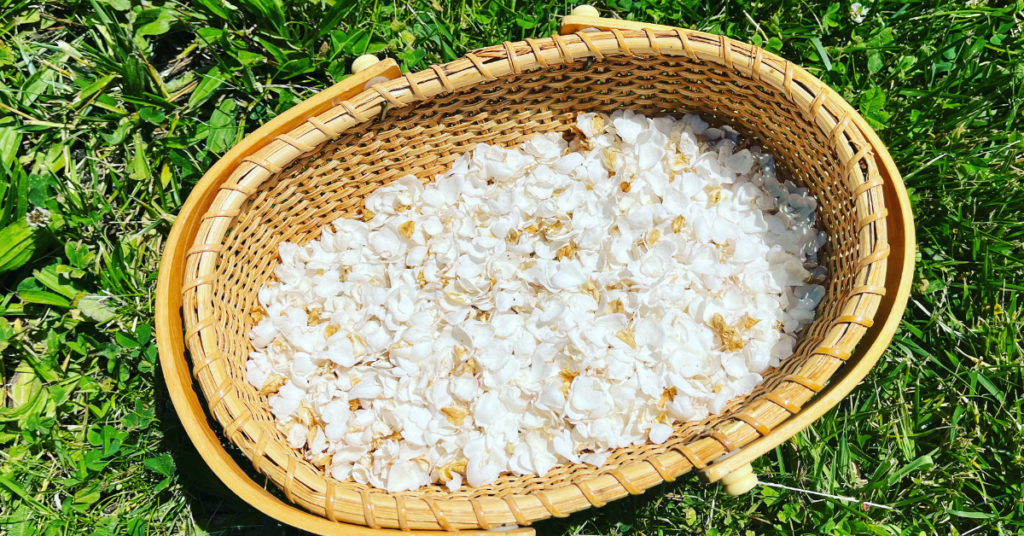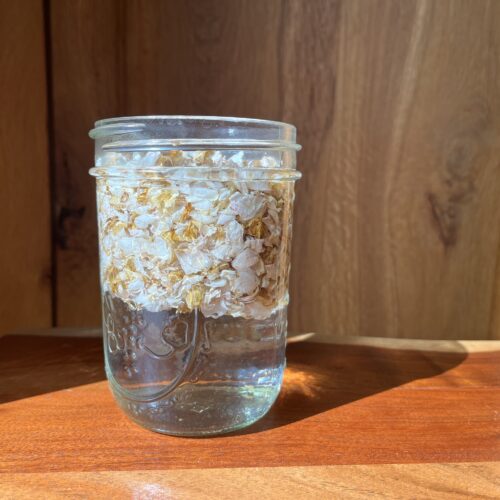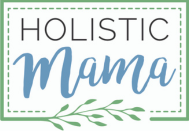If you have wild roses in your yard or nearby you might consider making a wild rose tincture. Roses have a long history of apothecary use. Many different cultures have discovered its usefulness for similar ailments. The discovery of vitamin C in the early 1900's has validated the reason roses have medicinal use. Preparations of the wild rose plant – petals, hips, roots, and bark – have been made historically by Native Americans and also in Europe, Asia, and the Middle East.

Rose Benefits
Rose acts as a mild nervine, calming anxiety and jitters, and can ease insomnia and migraines. Many people find it an uplifting and gentle anti-depressant. It’s also anti-spasmodic so it is a useful treatment for stomach or menstrual cramps. Rose uplifts the spirit is a support for the heart, promoting circulation and purifying the blood. It nourishes women's health and rebalances hormone production.
Roses also have many uses in skin care and add a wonderful scent to these products. Other types of roses, like rosa rugosa, have a stronger smell and those are used in skin care products (as well as tinctures). You can also make rosewater with this recipe.
How to Make Rose Tincture
Rose tincture is a powerful way to extract the healing properties of the rose. It can be made with alcohol or with glycerin but rose glycerin is quite delicious and a really pleasant experience. Make this wonderfully fragrant tincture with glycerine

Rose Tincture or Glycerite
Ingredients
- 200 g dried or 300g fresh rose petals
- 1 quart solvent – alcohol 100 proof vodka is ideal glycerin (3 part glycerin 1 part distilled water), or vinegar
Instructions
- Place rose petals in a large, clean glass jar and pour on the solvent ensuring that the herb is covered.
- Close and label your jar with the name of the herb, solvent, and the date.
- Shake the jar for 1-2 minutes.
- Store in a cool dark place for at least 10-14 days (or longer), shaking the jar every 1-2 days.
- After 14 days you are ready to strain out the herbs. Pour the jar through a mesh strainer or cheesecloth. (There are some new fancy tools for this I have found like this herb press that helps make it less messy and extracts every last drop).
- Squeeze out the herb to get all remaining liquid.
- Discard or compost your herbs.
- Pour your finished tincture into a clean dark class bottle using a funnel.
- Close and label your jar with the name and date of your tincture.
![]()
Thank you for reading this post, don't forget to subscribe to stay in the loop. If you are looking for some of the healthy tools and resources mentioned in my articles, take a look at my healthy shopping guide.
Some of our links are affiliate links, which means if you click and buy, I earn a small commission. The price is the same for you, though. Thank you!
You might also like these posts...


Oooh, I’m saving this for summer! We have wild roses growing here down by the river, and I’ve always wanted to harvest from them.
Yes! That is perfect. I harvest them from the woods along our farm and have done it with alcohol and glycerin. Both come out wonderful